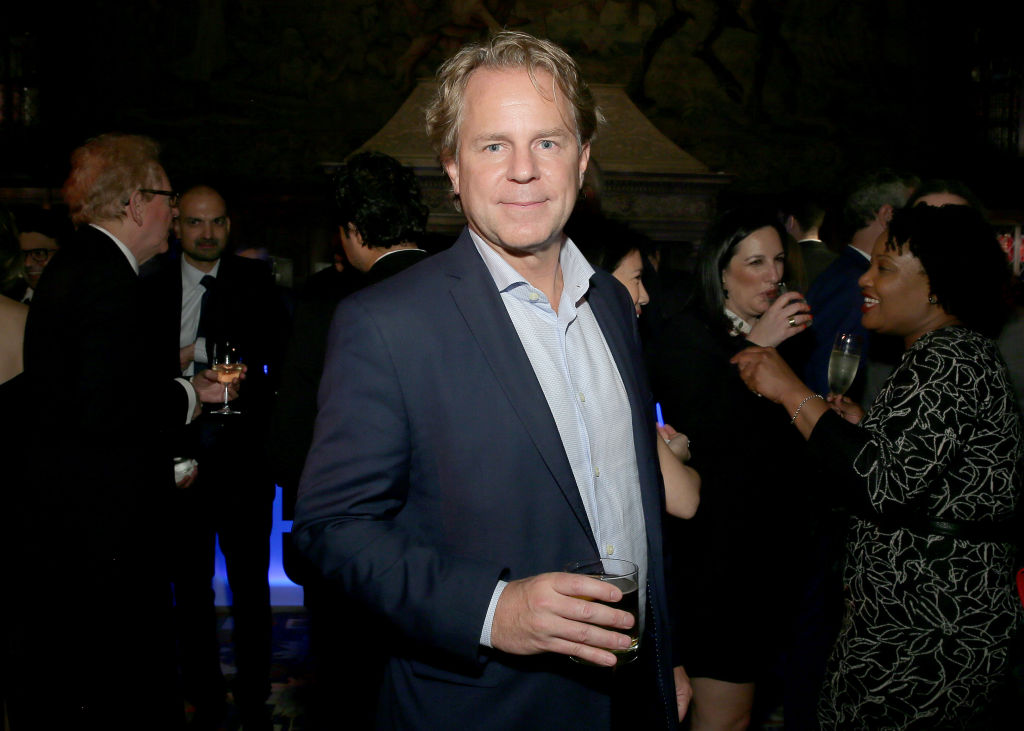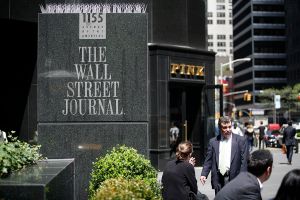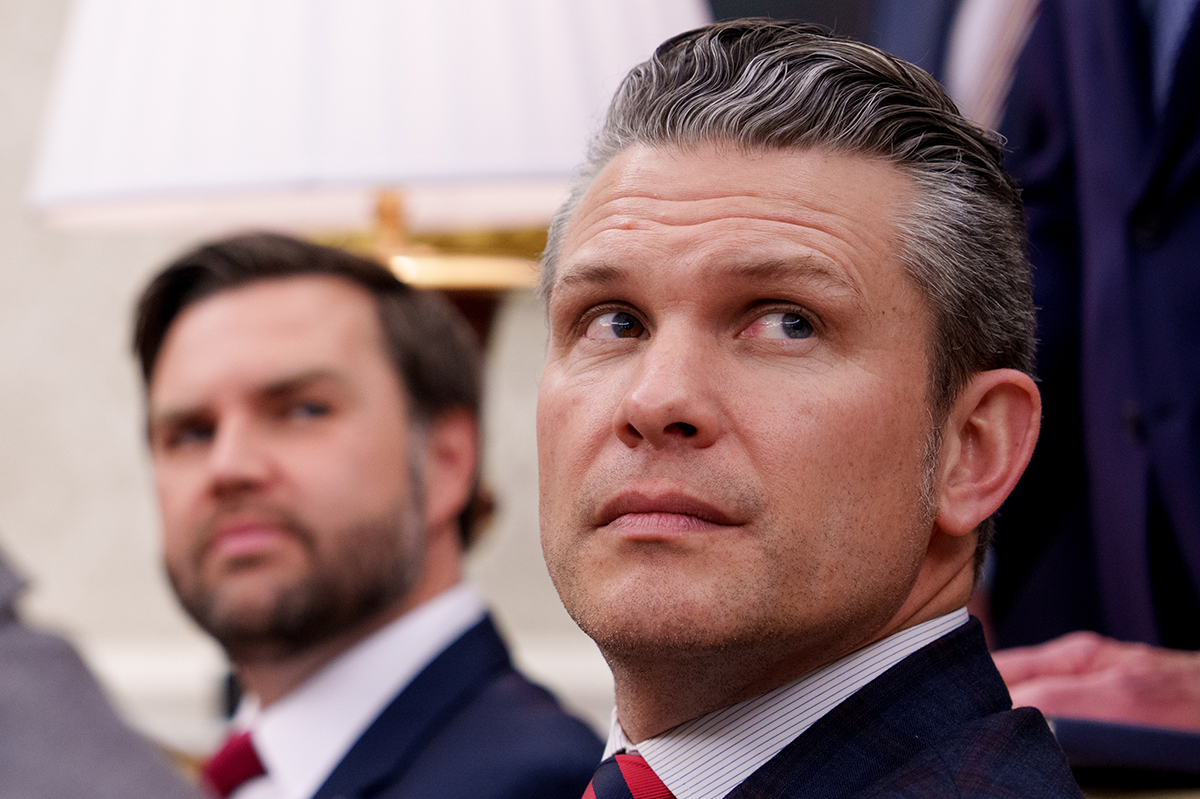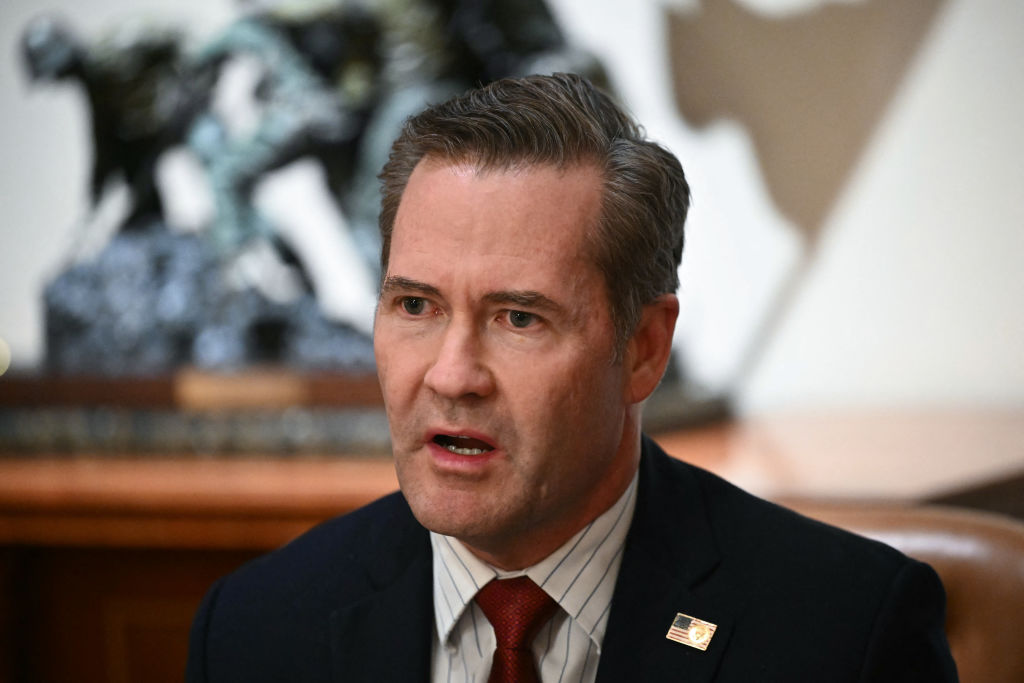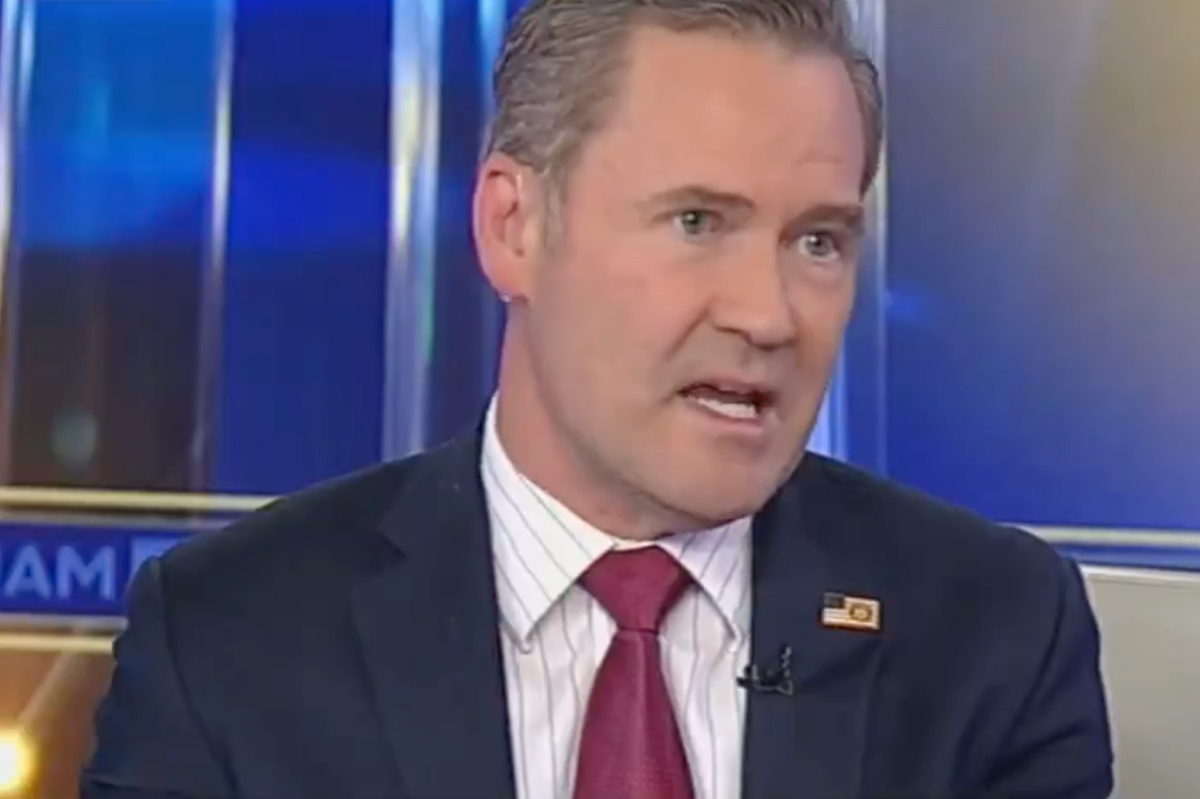On January 4, Justin Smith announced that he was stepping down as CEO of Bloomberg Media to found a startup. He would pursue a “new kind of global news media company,” one that would serve “unbiased journalism to a truly global audience.”
Ben Smith, the New York Times media columnist, resigned on the same day. The two Smiths were joining together to work on what was known at the time only as “Project Coda.”
In the flurry of press coverage that followed, some hubristic claims were bandied about. The era of the foreign correspondent was over, Justin insisted. Throughout the world, there were 200 million college-educated, English-speaking professionals who were underserved by current news media, Ben maintained. Their news platform would meet those needs and eventually grow to rival both of the men’s former employers. They pledged to restore consumer trust in the news product, to address information overload, to fix the journalistic talent pipeline, and to fight partisanship, parochialism and the distortions of social media. They would also make money.
Nine and a half months later, Semafor launched. For a company intent on solving those problems and rivaling the largest media titans in the world, it was a modest affair.
A few minutes after 6 a.m. ET on October 18, a tweet announced the launch, linking to a minimalist website with two dozen stories. Above the Semafor nameplate, analog clocks showed the time in six global cities and a small GIF of the Earth revolved briskly. Two minutes after the tweet, Semafor’s Flagship newsletter hit subscribers’ inboxes. Seven other newsletters eventually followed.
Traffic on the first day surpassed 150,000, Justin told me when I visited Semafor’s Manhattan office last month. Although visits to Semafor were largely concentrated in the United States, there were hits from across the world. “It was really gratifying to look at Google Analytics to see where there were eyeballs in that first twenty-four hours,” he said. “Basically, the whole globe was covered.”
Of course, website visits from IP addresses are one thing. Delivering on Semafor’s ambitious goals is another. “A lot of us have agreed to a ten-year timeline,” he told me.
***
Smith is fifty-three, with blue eyes and a mop of blonde hair, usually styled in a long side swoop. He dresses in the smart-casual uniform of a modern American CEO, with no tie, occasionally just a polo shirt. His reading glasses are a rare sign of age for someone who, because of his self-declared “baby face,” had to bring middle-aged colleagues along to meetings in order to be taken seriously earlier in his career. His warm smile and genial demeanor project an unassuming, even disarming, air, which — while genuine — ultimately conceals a deep sophistication and considerable ambition.
In private, he can have an expansive emotional range. David Bradley, his former boss at the Atlantic, told me: “He would be furious with me and then be devoted as a son.” Talented people can be “complex, tightly wound, intense,” Bradley observed. “Justin is all those things. And, tribally loyal.”
Smith’s career has paralleled, profited from and arguably even contributed to globalization. Semafor aims for a global audience, but launches into an uncertain economic climate, where some are speaking of “deglobalization.” Smith, a veritable global citizen, and his team are making at least three major bets.
The first big bet is on their article format, “the Semaform.” By structurally segmenting the news from the author’s opinions and other viewpoints, Justin and Ben claim that they are meeting a widely desired demand of news consumers.
The second bet is that, with its newsletter offerings, Semafor can bypass social media and allow readers to compile their own manageable combination of complementary verticals based on their own interests. Semafor is betting on Africa in particular. One of its eight verticals is Semafor Africa, the only geographic region so recognized. Its editor Yinka Adegoke told me, “Our intention is to become the most influential international media house covering Africa.”
Semafor’s third bet is on events. A common theme in Justin’s career over more than a quarter of a century, events can raise a publication’s profile and provide a steady stream of revenue even when subscriptions and advertising stagnate. According to a company spokesperson, Semafor will have held fifteen events by the end of this year, totaling over 30 percent of their revenue. They have forty events planned for 2023.
None of these bets is a sure thing. The article divisions of Semaform, a kind of halfway house between Axios’s bullet points and the prose of a traditional news article, can, at times, come across as arbitrary. Competing with established specialists with more detailed offerings may be difficult given the limits Semafor has set for itself. It is doubtful that the site will become the first choice news source for anywhere near 200 million readers. And if Semafor can’t build a large and loyal enough readership, then events can only compensate for so much.
These risks don’t seem to bother the money men. Bradley, one of only six outside investors in Semafor, said he’s been asked many times this year if Semafor will succeed. “Invariably, my answer is ‘yes’. I’ve not done any due diligence on the strategy. I’m just betting with Justin.”
More than anything else, this seems to be the case for Semafor succeeding: the pedigree of its founders. No one knows what the next wave of media disruption will bring. The assumption seems to be that Justin and Ben — and Justin in particular — can be counted on to adapt to whatever it might be.
***
Justin Smith was born in Connecticut in 1969, but he grew up in Paris. “When my conscious eyes to the world opened, I was in a classroom in Paris, speaking French,” he told me.
Justin is a classic third-culture kid, the son of parents from two different countries who is raised in a third. His American father, Damon Smith, is an Ivy League graduate who became president of the American College in Paris. His English mother, an artist from Manchester, growing up in a place Smith describes as “postwar, northern English, tough.”
And Smith grew up in Paris, speaking French at school with friends from a variety of countries. He attended the prestigious École Internationale Bilingue. The hometown newspaper in his cosmopolitan milieu was the International Herald Tribune, the most prominent newspaper in the world and, in the early 1980s, the only one distributed on both sides of the globe.
Six years ahead of him at the École Internationale Bilingue was Antony Blinken, the future secretary of state. “I knew who he was, because he was the lead singer of this Pink Floyd cover band who would play all these concerts at school,” Smith remembers, “but he didn’t know who I was.” (That situation was rectified a few years ago when Blinken attended a large party at Smith’s home in Kalorama.)
At the end of middle school, Smith had what he termed “disciplinary issues.” His parents sent him back to the US to the Fessenden School to “pull myself together…which I did.” He then moved on to Phillips Andover for high school, where he worked for the Phillipian and studied Mandarin. During the 1986-87 school year, he studied abroad in Harbin in the northern reaches of Manchuria, China.
Shortly after graduating from Georgetown, Smith wrote a hand-written letter to Lee Huebner, IHT publisher and family friend, to ask if there was an opening for him as a cub reporter in Asia.
The best Huebner could offer him was a job on the business side in the Far East. “We would love to have someone to go out to east Asia and identify some new business opportunities in the region, in particular in conferences and events,” Huebner wrote the young man. Smith had no idea what any of that meant, but a chance to work for the IHT in east Asia in the early 1990s, as globalization was picking up, seemed too great an opportunity to pass up. So he took the job.
“It changed my life,” Smith remarks.
Arriving at the IHT, Smith had passable Mandarin, enormous enthusiasm and a growing Rolodex. In the mid-1990s, China had just begun a new era. Reforms begun under Deng Xiaoping were starting to bear fruit and it hoped to join the WTO. China still had very little contact with the outside world. What if Smith could put top Chinese officials into contact with the executives of Western multinationals?
He struggled at first, holed up in his hotel room in Beijing trying to figure things out. “I am reminded of these days right now at Semafor. Going through phone books and cold calling people,” he says. Through his Andover network, Smith made contact with John Hoffman, who ran a China-based consulting business called XRG. Hoffman was a high-level fixer with deep experience in China and countless local contacts. Through Hoffman, Smith was able to sell the idea of an IHT summit to the Chinese Politburo. Western multinationals, for their part, paid hundreds of thousands in sponsorship to gain access to them.
The grand gathering concluded with an elegant banquet at the Great Hall of the People in Beijing, attended by the IHT brass, multinational CEOs, a who’s who of the Chinese leadership class — and a twenty-four-year-old Justin Smith. (Richard McClean, who replaced Huebner as IHT publisher, remembers that the Chinese insisted that Edward Heath provide the keynote speech, as he was the last British prime minister to know Mao.)
The IHT made millions from the China Summit, bringing the newspaper into the black for the year. After two successful encores, McClean decided to reward Smith: “He was a very good operator, very creative, a very good person to work with… the Tribune owed him a lot.” He brought Smith back to IHT headquarters in Paris with a desk just outside of his own office and a very broad portfolio. McClean provided Smith with an apprenticeship in newspaper publishing at a global level. McClean taught him the inner workings of the publishing business, including different revenue streams, cost structures and management challenges. Smith was already on his way to mastering a 360-degree, integrated view of the newspaper business. “It provided me a holistic understanding of publishing,” Smith reflects. “Over time, it became my competitive advantage.”
As part of his responsibilities at the IHT, Smith presented at the annual IHT board meetings in Paris, lavish affairs, where the IHT owners, Katharine Graham of the Washington Post and Arthur (“Punch”) Sulzberger of the New York Times, descended on Paris, stayed at the Ritz and visited with French politicians. “I worked very hard at presenting for them, only to find myself super disappointed when they didn’t engage.” Despite its globally-recognized brand, the IHT was “a rounding error” for Graham and Sulzberger.
In late 1996, Marjorie Scardino, the CEO of the Economist, called Smith up and offered him a job. “It seemed to solve all my problems,” he remembers. Despite the IHT’s illustrious past and globally-recognized brand, he felt he was in a place with no future. He didn’t want to go back to the US, but he did know that he wanted to continue pursuing a career in the global publishing market. “The Economist was the most ascendant news brand in premium journalism at the time; it was like getting a call from the Yankees,” he recalls. Smith returned to east Asia for The Economist Group to launch CFO Asia, a publication for business executives, and later CFO.com in New York.
Although Smith felt international, it was during this stint at a British magazine that he came to realize just how American he was. “I had a lot of energy, a lot of ideas and a lot of ambition, and sometimes ambition is not appreciated in British culture.” He remembers one time when he came into conflict with the older, British media executives, one of them remarked, “Justin is so enthusiastic.” It was said “in that very British way,” he recalls.
Then he got a call from Felix Dennis. Dennis was a publishing magnate who famously claimed to have pissed away more than $100 million on sex, drugs and rock ’n’ roll. His company Dennis Publishing was famous for its wildly successful collection of “laddie mags” like Maxim, Blender and Stuff.
The most interesting magazine in the portfolio was not a laddie mag, though. It was the Week. Created in a converted London garage in 1995 and purchased by Dennis a few years later, the Week was created as a solution to the problem of information overload. In 2001, Dennis had just launched an American version and was looking for someone to head it up.
In his 2006 book How to Get Rich, Dennis outlined the eight principles that made him a multi-millionaire publishing magnate. Number 5 was “Hire talent smarter than you. Delegate. Share the annual pie.” And that’s exactly why he hired Smith in 2001. (Smith is thanked in the acknowledgements.)
The entrepreneurial spirit of the Week appealed to Smith. “At one point, we gave the Week to every spouse of every member of Congress. For marketing, we told them, ‘Just read the Week and be prepared for any conversation at any given time.’” He created a splashy event series called “The Week in Grand Central,” hosted by Harold Evans, which consisted of a weekly debate on a topic of society, art, culture, or politics on the Grand Central balcony. They all attracted large crowds and even greater publicity.
The Week, much like Semafor, aimed to present all sides of an issue, but with a witty, winking tone. Smith’s stewardship of the Week earned him attention. David Bradley, the owner of its rival National Journal, began to ask around about the new weekly magazine. “We began losing market share to the Week, as to which I had heard nothing,” Bradley remembers. “I watched the Week produced markedly smarter and more-glamorous advertising events than had occurred to us and began to ask about Justin.”
After following his career for two years, Bradley, who also owned the Atlantic, invited Smith to a dinner at the Carlyle in New York. “The service is so painfully slow that the guest needs to spend hours in conversation with me. My dinner with Justin was among my longest. It lasted three hours.” Upon returning home, Bradley stayed up another three hours and wrote Smith a many-page memo on his career and what he could do at the Atlantic.
The pitch worked. Smith, who had been in negotiations to join another company, was sold on the idea of restoring a treasured national magazine to financial health and bringing it into the digital age.
It presented a different set of challenges from launching a new publication like the Week, or Semafor today. James Bennet, editor of the Atlantic during Smith’s time there, observes, “It is much harder to turn a legacy publication around — there is so much inertia in a legacy publication… but Justin is an expert.”
One of the keys in turning around a legacy publication was finding a way to keep its traditional identity but update it for a new age. “He led us all in putting together a plan for the Atlantic’s turnaround,” Bennet told me. “He was able to see the whole picture: the editorial piece of it, the sales piece of it, the investment in technology we needed to make.”
After two years (twelve months earlier than scheduled), Smith had brought the Atlantic into the black. Bradley visited Smith at his DC home. In front of his parents who were visiting, Bradley presented Smith a plaque declaring that he had achieved what many had tried but failed to do for decades: establish a sustainable business model for the Atlantic. Bradley gave him a framed check — a subscription check from someone in the South — that Bradley claimed had flipped the Atlantic into profitability.
“At the time, it was a really big deal. We won all the awards. All the trade magazine covers,” Smith remembers. As a reward, Bradley gave him a blank slate to create a new media company within the Atlantic Company’s portfolio, which he used to launch Quartz, a new, digitally-native global business magazine.
Not one to rest on his laurels, he once again decided to move on. “I was feeling itchy to try something new,” he remembers. Dan Doctoroff and Norm Pearlstine approached him about running Bloomberg Media. Bloomberg’s media company had always been an almost forgotten appendage of the highly successful terminal business.
One of Smith’s major accomplishments at Bloomberg was to resolve that problem. “We were able to double our revenue,” Smith observed proudly. “By many metrics, Bloomberg Media is the most influential, largest media company in world. I had accomplished a lot of my goals and objectives.” Once again, the question became: what next?
When Smith launched new products for media giants like the Economist group or the Atlantic Media, a thought would cross his mind: “Wouldn’t it be nice if I could be given the opportunity to do it for myself or for a group of shareholders I was involved with?”
Smith had long flirted with the idea of starting his own media company, but the timing was never right. “There is no doubt that I would not have started Semafor in its current design and architecture content-wise and business model-wise in an earlier time.” He spoke widely with friends and colleagues about his idea, including with Ben Smith. An ongoing conversation developed into something truly earnest in 2019.
In 2020, just as he was joining the New York Times, Ben wrote a memo to Justin with a sketch of what the new media company would look like. He called it “the World.” (The next year, at Christmas, in celebration of Justin’s next big venture, his daughter Esmé gave him a mug with the “World” logo on it.) Ultimately, however, copyright and branding issues proved too tricky, and so they took the advice of a brilliant and eccentric family friend and called it Semafor.
***
You would be hard pressed to find a media executive with as sustained a streak of success as Justin Smith. His career has paralleled the radical evolution of the global news business. At two global print empires, he made his mark in media institutions with long histories and deep legacies. At the Week and Quartz, he had a tabula rasa to create a new news organization, much as he has today with Semafor. At the Atlantic and Bloomberg, he brought fundamental change to large, established institutions, generating financial success where there was none.
Former and current colleagues heap praise upon Smith for that track record. They tell me that he has a deeply integrated knowledge of the global media landscape.
Occasionally, in interviews, hints of another side of Smith’s success emerge. Some who worked with him in his early years found him arrogant and disrespectful. Almost none of them wished to go on the record, but his ambition seems to have rubbed some the wrong way. There are reports of factional struggles both at the Week and at Bloomberg.
Zazie Pence, a close friend and longtime colleague, notes, “There were people he didn’t work well with. There used to be a Justin Team and a Carolyn Team at the Week. He doesn’t suffer fools very well and is very clear about that.”
However, as he has gained experience, Smith has mellowed — or at least learned to minimize his ego. Pence observes that his hyper ambitious nature “in the beginning was at the detriment of others,” but that he has grown. “He has learned to share credit and be humble, to admit mistakes and go someone else’s way.”
From the Sulzbergers and Grahams to Felix Dennis, David Bradley and Michael Bloomberg, Smith has worked for some of the greatest media owners in recent history. Now he hopes to join them.
Smith has purposefully insulated Semafor from outside pressure, including from its investors. As he announced in response to the recent scandal involving Sam Bankman-Fried, one of its investors, all money received was in a SAFE (Simple Agreement for Future Equity) with further safeguards in place. This detail about Semafor’s business structure means that it is preserved from any undue influence from the disgraced crypto mogul. It also means that its founders have enormous leeway in how they run the company.
Smith’s vision for Semafor is audacious if not downright hubristic. The news platform may very well become a mammoth, globe-spanning success. But it also might fizzle out, a premature failure. More than anyone else, Justin Smith will determine which it will be.



